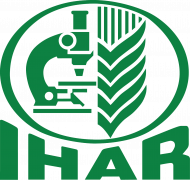Abstract
Marker-assisted selection (MAS) is more efficient with single locus marker methods than with the complex multi-locus AFLPTM system. Therefore, a method is described to convert AFLP markers into sequence characterised amplified region (SCAR) markers using arbitrary short primers that were generated based on AFLP markers linked to potato disease resistance genes. In the first step of this method, we synthesised short primers with nucleotides (A, T, G, or C) added to the 3′-ends based on primer sequences of AFLP markers. In the next step, polymerase chain reaction (PCR) analyses were performed with bulked segregant analysis (BSA) by combining the synthesised arbitrary primers with 10-base primers. In the final step, DNA fragments that were associated with disease resistance genes were detected using BSA and were converted into SCAR markers. Using this method, AFLP markers linked respectively to Globodera rostochiensis resistance gene H1 and Phytophthora infestans resistance gene R2 were easily converted to SCAR markers without using AFLP system. The detected SCAR markers were clear and reproducible. Thus, in MAS using SCAR markers, conversion of AFLP markers to SCAR markers using an arbitrary short primer could be an effective breeding tool.















